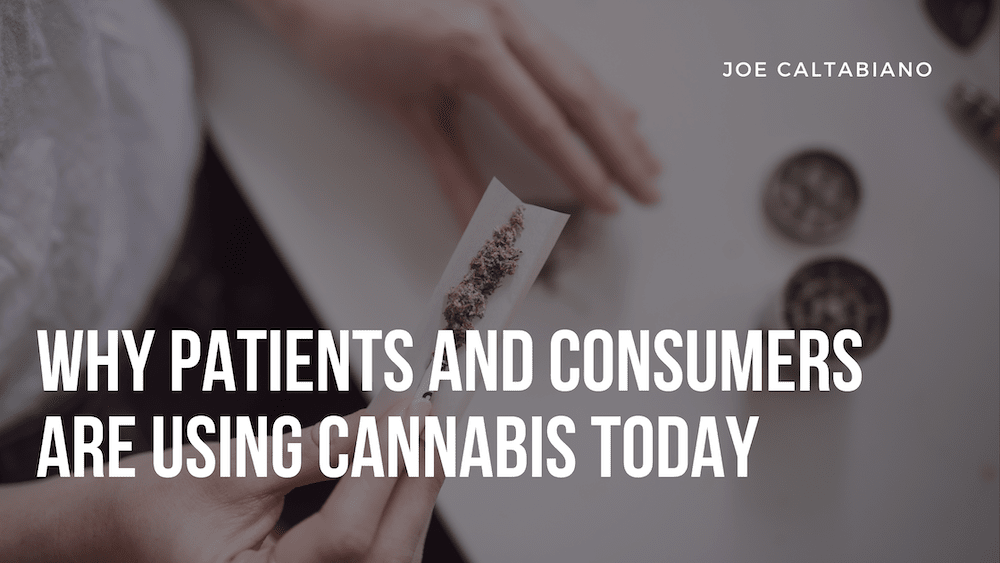Because cannabis is such a multifaceted plant with a wide array of uses, its consumption often is attributed to multiple reasons. Aside from the recreational pursuits of relaxation, though, cannabis use today is most often compared to a medical product, just like the over-the-counter and prescription ones relied on by more than 130 million Americans. And its use as a medical product is skyrocketing as legalization and consumer knowledge grows at a breakneck pace.
Medical Marijuana’s legitimacy as a tool for medicinal purposes is multifaceted, affecting everything from opioid addiction to chemotherapy tolerance. And compounding the levels of its use today is the fact that many consumers increasingly are turning away from addictive pharmaceuticals in favor of cannabis, and they’re doing so because of its capacity to provide sufficient pain relief for a host of physical and physiological conditions.
And while most of the general public knows about the recreational pursuit of marijuana and how it can ease pain, many non-users are unaware of how increasingly more people today use cannabis (both as THC and CBD products) to manage and even eliminate the symptoms of both general and specialized anxiety.
Specific conditions and precise treatments
Cannabis research of any kind – medical or otherwise – has been severely restricted because of marijuana’s Schedule 1 classification on the Controlled Substances Act, a designation that came about only because of the stigmatizing effects of the racist War on Drugs. But emerging research and study today is revealing something almost universally accepted among cannabis users and its advocates: Cannabis can improve human health. And it’s no longer the cannabinoids THC and CBD that are getting all the attention.
A variety of terpenes recently have been discovered to produce specific effects, allowing providers to create strains of cannabis that target patients’ needs more precisely. So as the industry of cannabis grows, so do its precision-guided treatments to support people grappling with specific medical conditions. This makes cannabis a great alternative to addictive medications such as opioids (for pain) and benzodiazepines (to control anxiety). While precision in effect is being honed, so are methods of consumption and dosage strength. Between vaporizers, edibles, pills, and tinctures they are a multitude of methods of consumption that are friendlier to new users and prolonged consumers alike.
But pain remains the main thing
In recent years, more people have turned to medical marijuana to manage their pain. This includes people with conditions as severe and threatening as neuropathy and multiple sclerosis and as disruptive to everyday life as social anxiety disorders. Between the terpenes discussed above and the variety of cannabis derivative products like CBD, there is a wide variety of places across the 50 states where you can find at least minimal access to the pain management capacities of cannabis.
Be smart how you consume
As with any other medicine, the benefits provided by using cannabis ought to outweigh the risk to justify taking it. Be sure to consult your doctor to determine how you think cannabis might affect you. Of course, always purchase from legal providers within your state to make sure purchased products fall within safe production modes in which you can research the products’ assurances of quality.
It is also significant to be aware of your employer’s policy on marijuana testing. Failing a drug test can cost you your job, especially if it’s one in an industry with heavy machine usage, for example. And note: CBD users also run the risk of a failed drug test sometimes, even if the product label says it is free of THC. As always, never drive while impaired with cannabis or any other substance.
Consider Cannabis
Cannabis is a suitable treatment for many who are suffering and feel devoid of management options. However, such patients need to be both knowledgeable and open-minded to make such treatments work. For instance, a CBD user must experiment to determine their optimal dose, or “sweet spot” is. In this way, it is far different from receiving a prescribed amount of medicine from a doctor. And since everyone has a unique endocannabinoid system (ECS), each person has an extra optimal dose. However, the advice for such users is to go “low and slow.” After all, the optimal dose is the lowest dose that addresses your medical concern. Like any other medicine you might be prescribed, stay aware that the process of dialing your appropriate dosage could take extra time.
